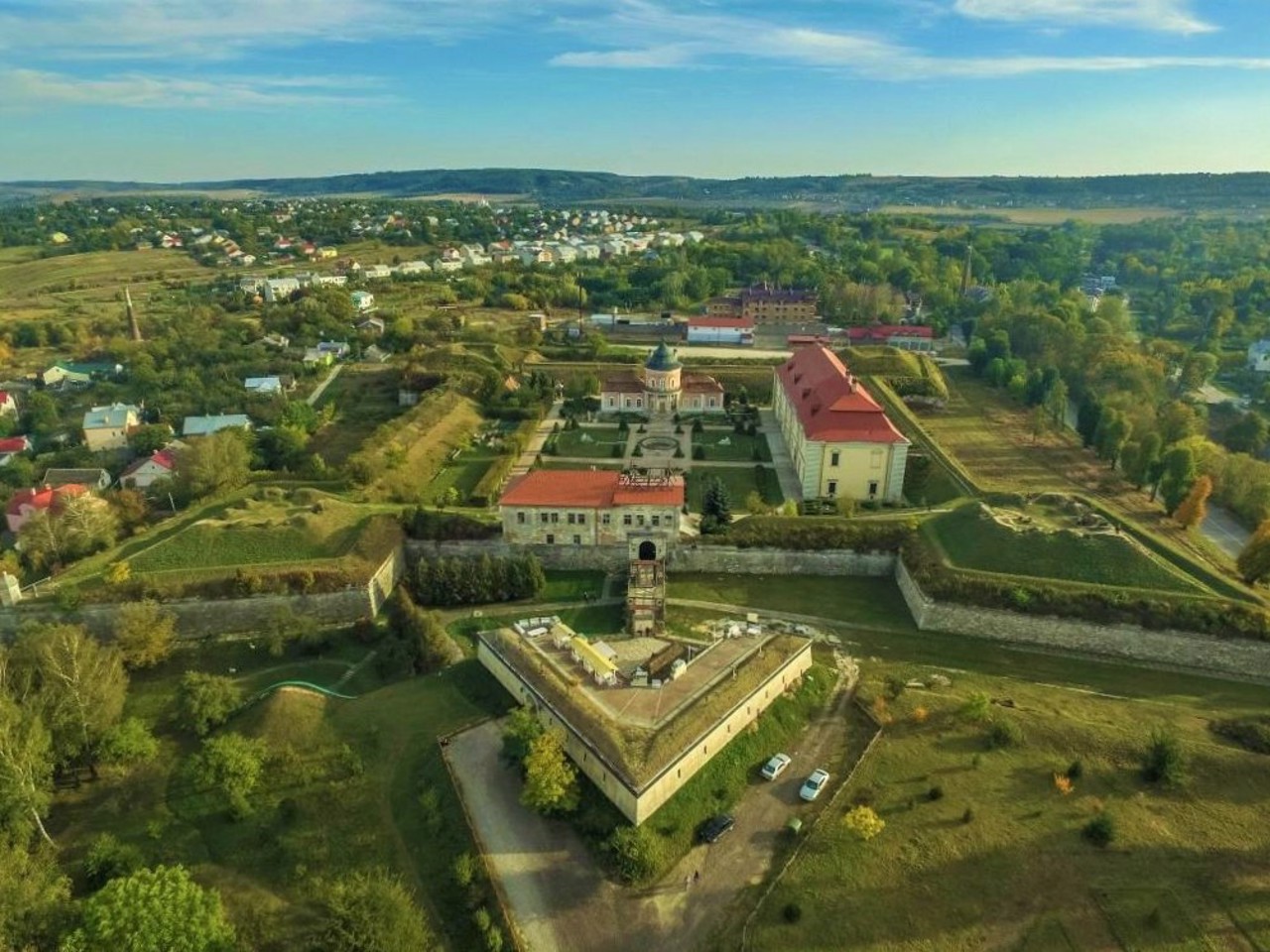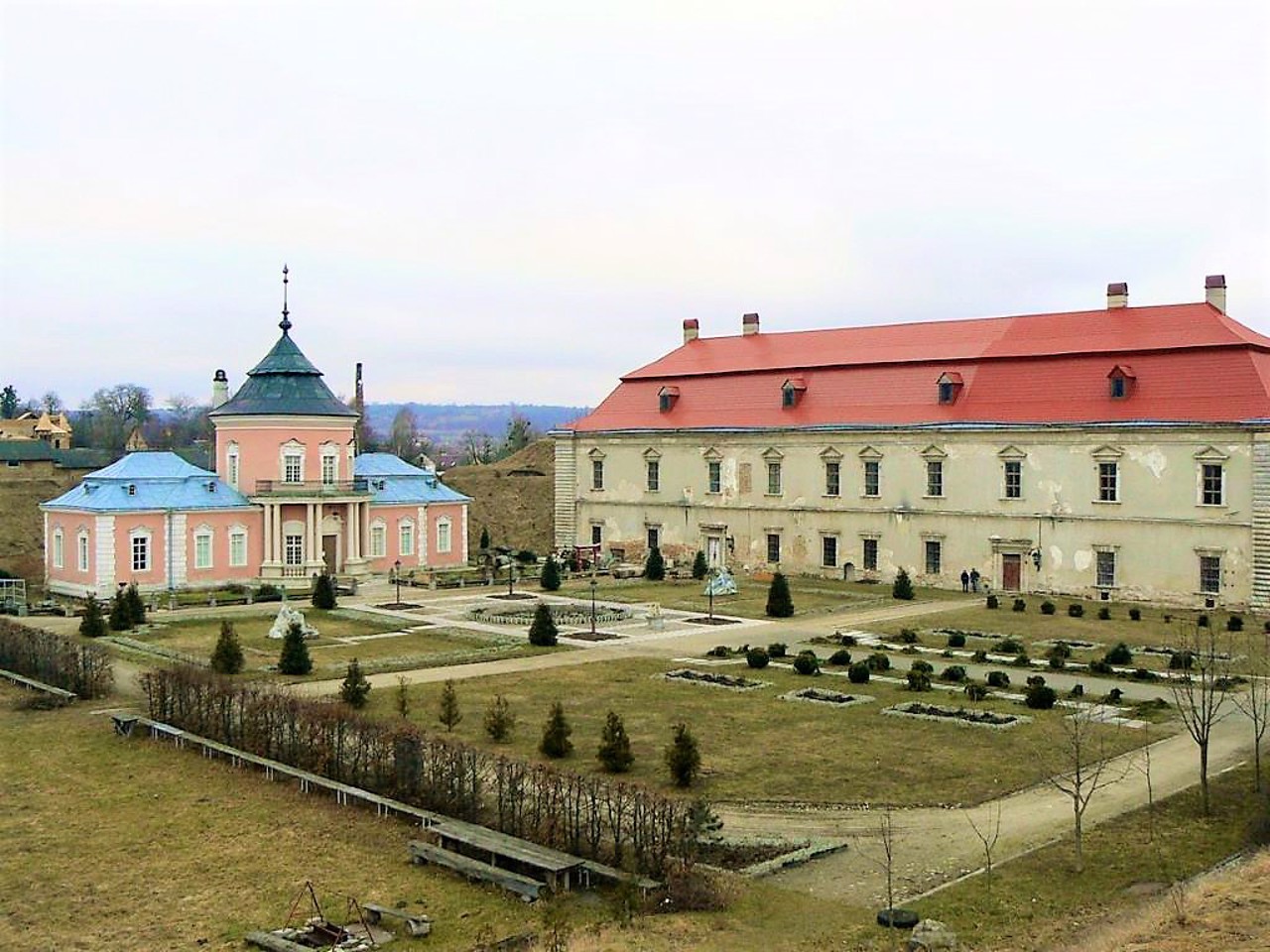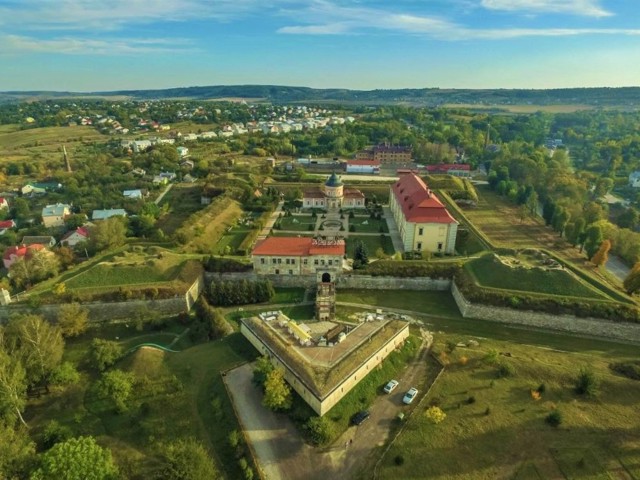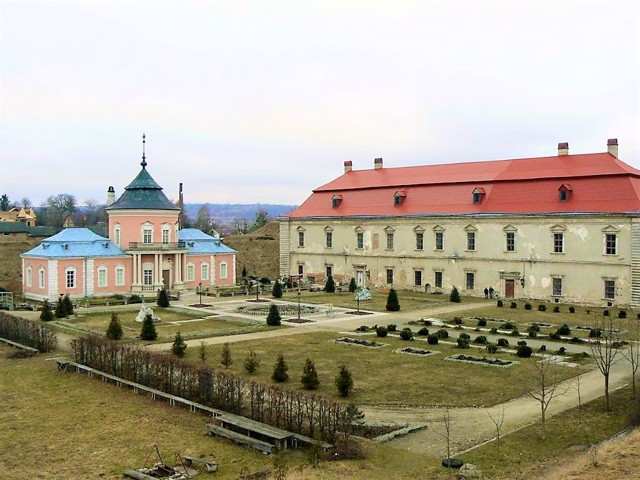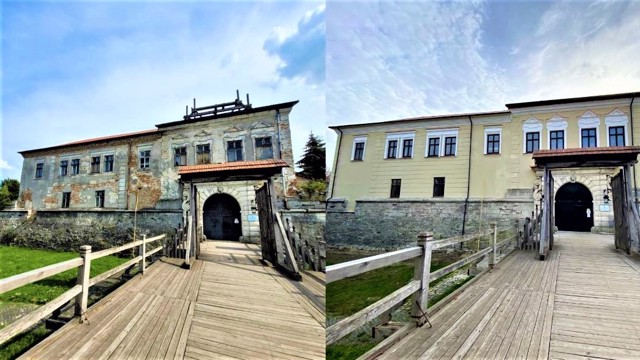Functional temporarily unavailable
General information about Zolochiv
The city of Zolochiv is a regional center on the Lviv-Ternopil road, which is part of the "Golden Horseshoe" of the Lviv region.
The first fortification Radeche on the Kupina hill above the Zolochivka river appeared as early as the 13th century.
The first written mention of Zolochiv dates back to 1427, when the town passed from the Kerdey family to Yan Menzhyk. In 1523, Zolochiv received Magdeburg law. The Boyar courtyard, the oldest building in Zolochiv, reminds us of the times of the boyar rule, when a lawsuit between representatives of the Shchechony clan was conducted outside the city.
The main attraction is the Zolochiv Castle, built in 1634-1636 by the Rus voivode Yakiv Sobesky, the father of the Polish king Yan III Sobesky. Since the 19th century, the ...
The city of Zolochiv is a regional center on the Lviv-Ternopil road, which is part of the "Golden Horseshoe" of the Lviv region.
The first fortification Radeche on the Kupina hill above the Zolochivka river appeared as early as the 13th century.
The first written mention of Zolochiv dates back to 1427, when the town passed from the Kerdey family to Yan Menzhyk. In 1523, Zolochiv received Magdeburg law. The Boyar courtyard, the oldest building in Zolochiv, reminds us of the times of the boyar rule, when a lawsuit between representatives of the Shchechony clan was conducted outside the city.
The main attraction is the Zolochiv Castle, built in 1634-1636 by the Rus voivode Yakiv Sobesky, the father of the Polish king Yan III Sobesky. Since the 19th century, the premises were used as a prison by the Polish and Soviet authorities, as well as by the German occupiers.
Other sights: Sain Nicolas Church (XVI century), Resurrection Church (1624), Ascension Church (1730), fragments of old buildings, the first monument to Vyacheslav Chornovol in Ukraine.
The city is particularly clean and orderly and quite interesting due to the many preserved architectural monuments. You can take a walk along the pedestrian street of Shashkevych and the squares laid out by the Austrians at the time on the site of the former city defense ramparts.
Місто Золочів - райцентр на трасі Львів-Тернопіль, що входить до "Золотої підкови" Львівщини.
Перше укріплення Радече на пагорбі Купина над річкою Золочівка з'явилося ще в XIII столітті.
Перша письмова згадка про Золочів датується 1427 роком, коли місто перейшло від роду Кердеєв до Яна Менжика. У 1523 році Золочів отримав Магдебурзьке право. Про часи боярського правління, коли за місто велася судова тяжба між представниками роду Щечонів, нагадує Боярський двір - найдавніша будівля Золочева.
Головною ж пам'яткою є Золочівський замок, побудований в 1634-1636 роках руським воєводою Яковом Собеським, батьком польського короля Яна III Собеського. З XIX століття приміщення використовувалися як в'язниця польською та радянською владами, німецькими окупант ...
Місто Золочів - райцентр на трасі Львів-Тернопіль, що входить до "Золотої підкови" Львівщини.
Перше укріплення Радече на пагорбі Купина над річкою Золочівка з'явилося ще в XIII столітті.
Перша письмова згадка про Золочів датується 1427 роком, коли місто перейшло від роду Кердеєв до Яна Менжика. У 1523 році Золочів отримав Магдебурзьке право. Про часи боярського правління, коли за місто велася судова тяжба між представниками роду Щечонів, нагадує Боярський двір - найдавніша будівля Золочева.
Головною ж пам'яткою є Золочівський замок, побудований в 1634-1636 роках руським воєводою Яковом Собеським, батьком польського короля Яна III Собеського. З XIX століття приміщення використовувалися як в'язниця польською та радянською владами, німецькими окупантами.
Інші пам'ятки: Миколаївська церква (XVI століття.), Воскресенська церква (1624 рік), Вознесенський костел (1730 рік), фрагменти старої забудови, перший в Україні пам'ятник В'ячеславу Чорноволу.
Місто відрізняється особливою чистотою та впорядкованістю та досить цікаве завдяки безлічі збережених пам'яток архітектури. Можна прогулятися пішохідною вулицею Шашкевича та скверами, розбитими свого часу австрійцями на місці колишніх міських оборонних валів.
Сплануй своє перебування у Zolochiv
What to see and where to go in Zolochiv
Tourist attractions and museums of Zolochiv
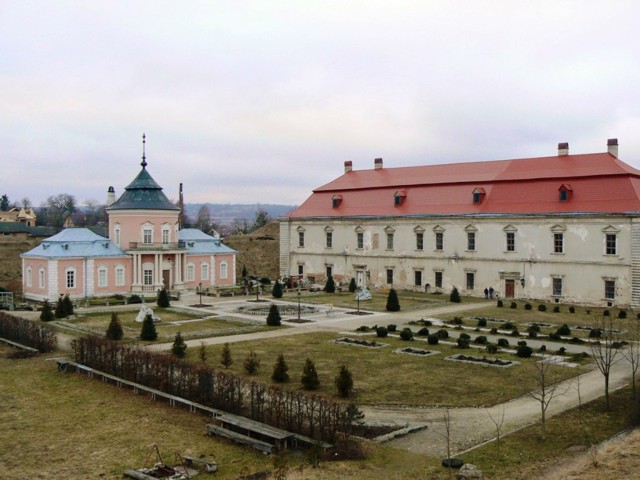
Zolochiv Castle Museum-Reserve
Castle / fortress , Palace / manor , Architecture , Museum / gallery
The wonderfully preserved Zolochiv Castle is one of the key objects of the "Golden Horseshoe of Lviv Region" tourist route. It represents the neo-Dutch type of defensive structures and belongs to the monuments of the "palazzo in fortezzo" type, that is, it combines the functions of defense and housing.
The Renaissance fortress in Zolochiv was built in the first half of the 17th century by the Polish magnate Jakub Sobieski, the father of the future king of Poland Jan III Sobieski. It is a rectangular citadel with four bastions at the corners and walls along the perimeter, inside which there are residential and economic buildings.
In 1686, by order of King Jan III Sobieski, the castle was restored and decorated with works of art. His mistress for a long time was the wife of King Marie Casimire.
Since the XIX century, the castle began to decline, later used as a prison by the Austrian, Soviet, Polish and German authorities. At the end of the XX century. restoration was carried out.
The museum exhibits are located in the Grand Palace (a residential building with complex communications) and the Chinese Palace, which is made in a rare Eastern European style. The construction of palace toilets is of great interest to visitors.
In the yard there are stones found on the outskirts with mysterious Gothic writings (XV century), which the legend connects with the activities of the Knights Templar.
In front of the gate the castle ravelin (advanced fortification) was restored. Inside there is a cafe "Ravelin" and a souvenir shop, on top there is an observation deck.
Zolochiv Castle Museum-Reserve is a branch of the Lviv National Art Gallery.
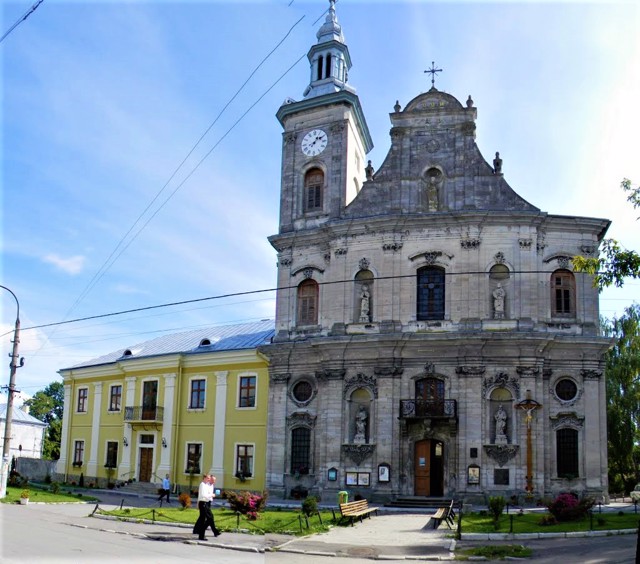
Assumption of Blessed Virgin Mary Church
Temple , Architecture
The Church of the Assumption of the Blessed Virgin Mary (the former Church of the Ascension) was founded in Zolochiv in 1730 together with the monastery and the collegium of piary.
After the liquidation of the Order of piary by the Austrian authorities in 1788, the church was closed, and warehouses were placed in the building. In 1838, the Roman Catholic parish moved here from the Resurrection Church, which was transferred to the Greek Catholics.
In Soviet times, it was the only functioning church between Lviv and Zbruch.
The Church of the Assumption of the Blessed Virgin Mary is made in the magnificent late baroque style. During the restoration in 1878, a quadrangular tower with a clock made of hewn stone was erected on the main facade, a veneered pediment, a roof covered with galvanized sheet metal, and five stone sculptures were installed in the niches. The vaults of the nave and apse are richly decorated with carvings and paintings.
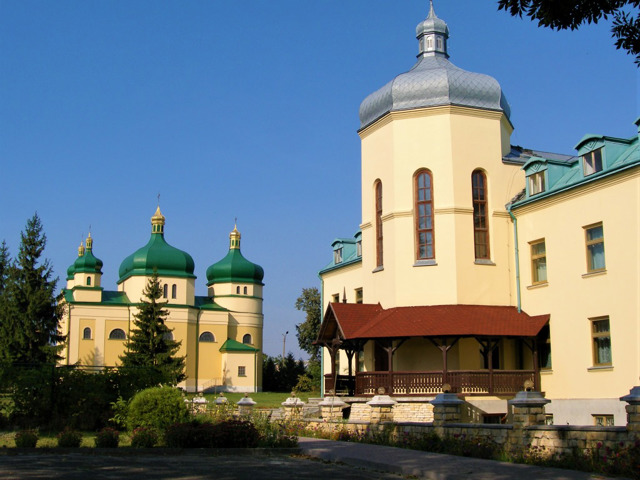
Basilian Monastery of Ascension of Our Lord Jesus Christ
Temple , Architecture
The Zolochiv Monastery of the Basilian Order was founded in 1567, and was then located 10 kilometers east of Zolochiv (now the village of Monastyrok).
Soon it was destroyed by the Tatars, but in 1665 it was restored by Yan Sobesky, the future king of Poland.
In 1704, Teodor Yavorskyi founded a new monastery with the Church of the Ascension - on the current site, on the western outskirts of Zolochiv. In 1740, the two monasteries were united into one Greek-Catholic Basilian monastery. In the 1840s and 1860s, the complex was rebuilt in stone at the expense of Countess Lukiya Komarnytska.
In Soviet times, a tuberculosis dispensary was located on the territory of the monastery.
Currently, it is an active monastery of the Ascension of our Lord Jesus Christ of the Basilian Order of Saint Josaphat.
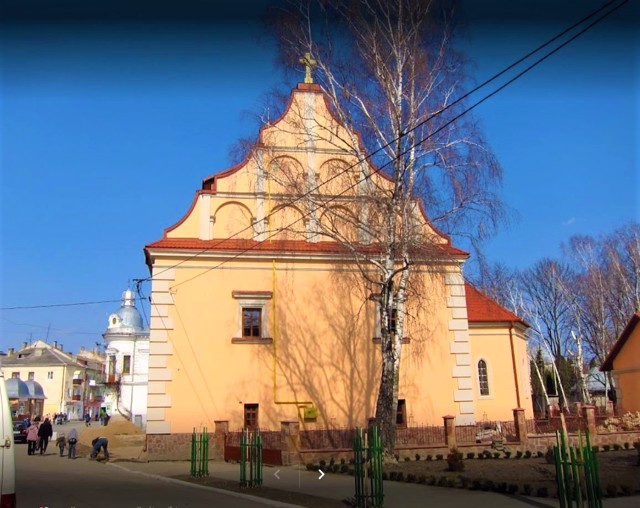
Franciscans Monastery (Boyar Court)
Castle / fortress , Temple , Architecture
The boyar court in Zolochiv, also known as the Zolochiv Arsenal, is a former fortified residence of the town's owners, built in the 15th century by representatives of the Shchechy boyar family.
This is the oldest architectural monument of Zolochiv. After the Zolochiv castle was built, the building began to be used as a city arsenal, then it was handed over to the parish church for the care of the poor.
Until recently, the building of the Boyar Court was in a state of disrepair. In 2012, it was transferred to the Ukrainian Greek-Catholic Church of the Exaltation of the Life-giving Cross, which carried out reconstruction and opened there the Holy Cross Monastery of Saint Damian Friars Minor (Franciscans) and the Chapel of the Exaltation of the Holy Cross of the Lord.
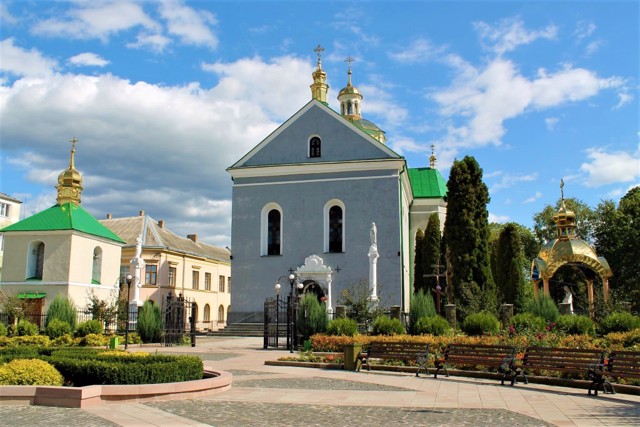
Lord's Resurrection Church
Temple , Architecture
The Church of the Resurrection of the Lord in Zolochiv was built in 1624-1627 by Yakiv Sobesky, the father of King Yan III Sobesky, as a parish Catholic church.
In 1838, as a result of the agreement with the Roman Catholic parish, the church was transferred to the Greek Catholic community of Zolochiv.
Built in the Renaissance style, the Church of the Resurrection is characterized by simplicity of form.
Today it is an active Orthodox church.
Zolochiv in news and blogs
Reviews Zolochiv
Geographical information about Zolochiv
| {{itemKey}} | {{itemValue}} |
|---|---|
| Region |
Lviv |
